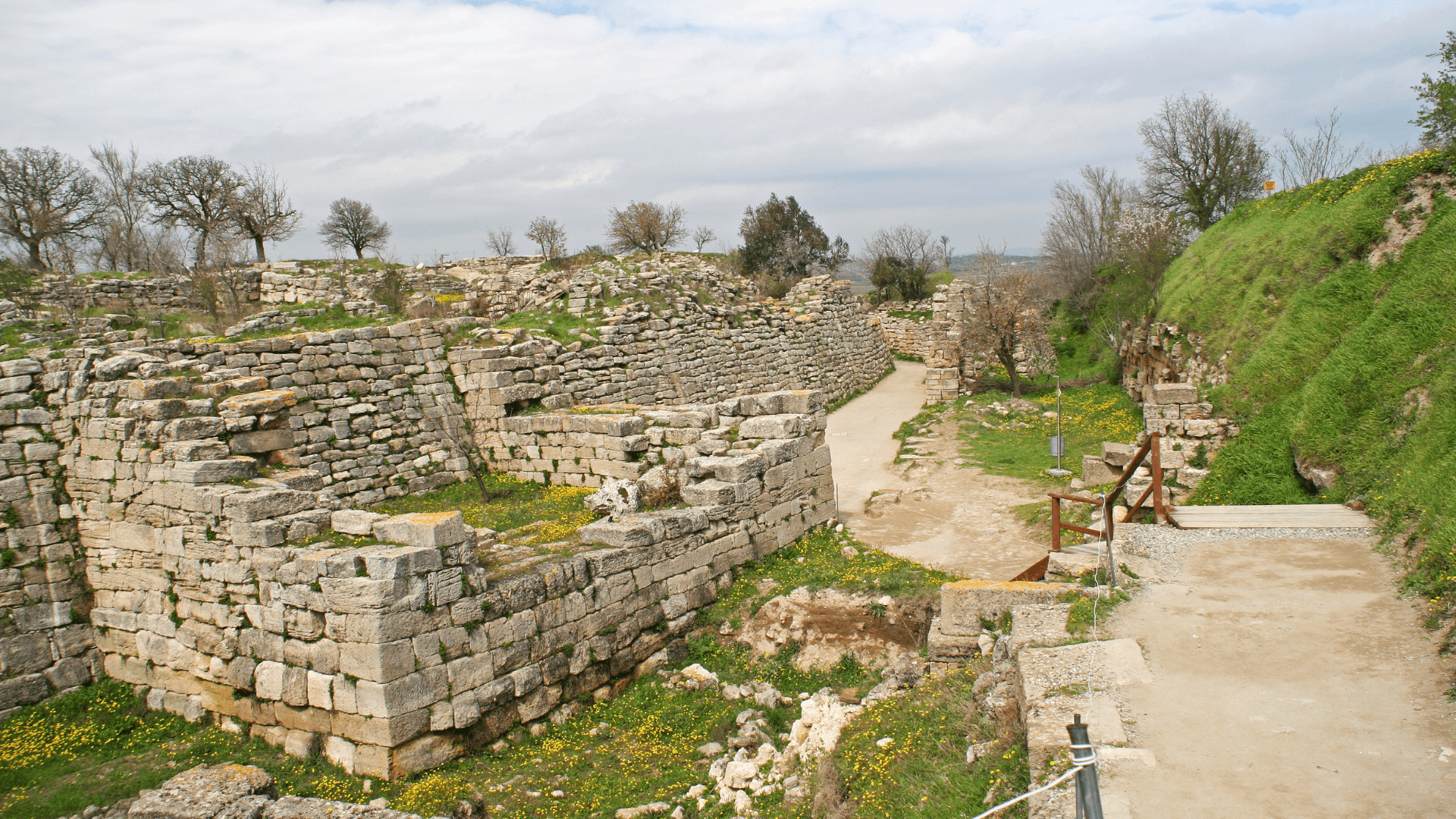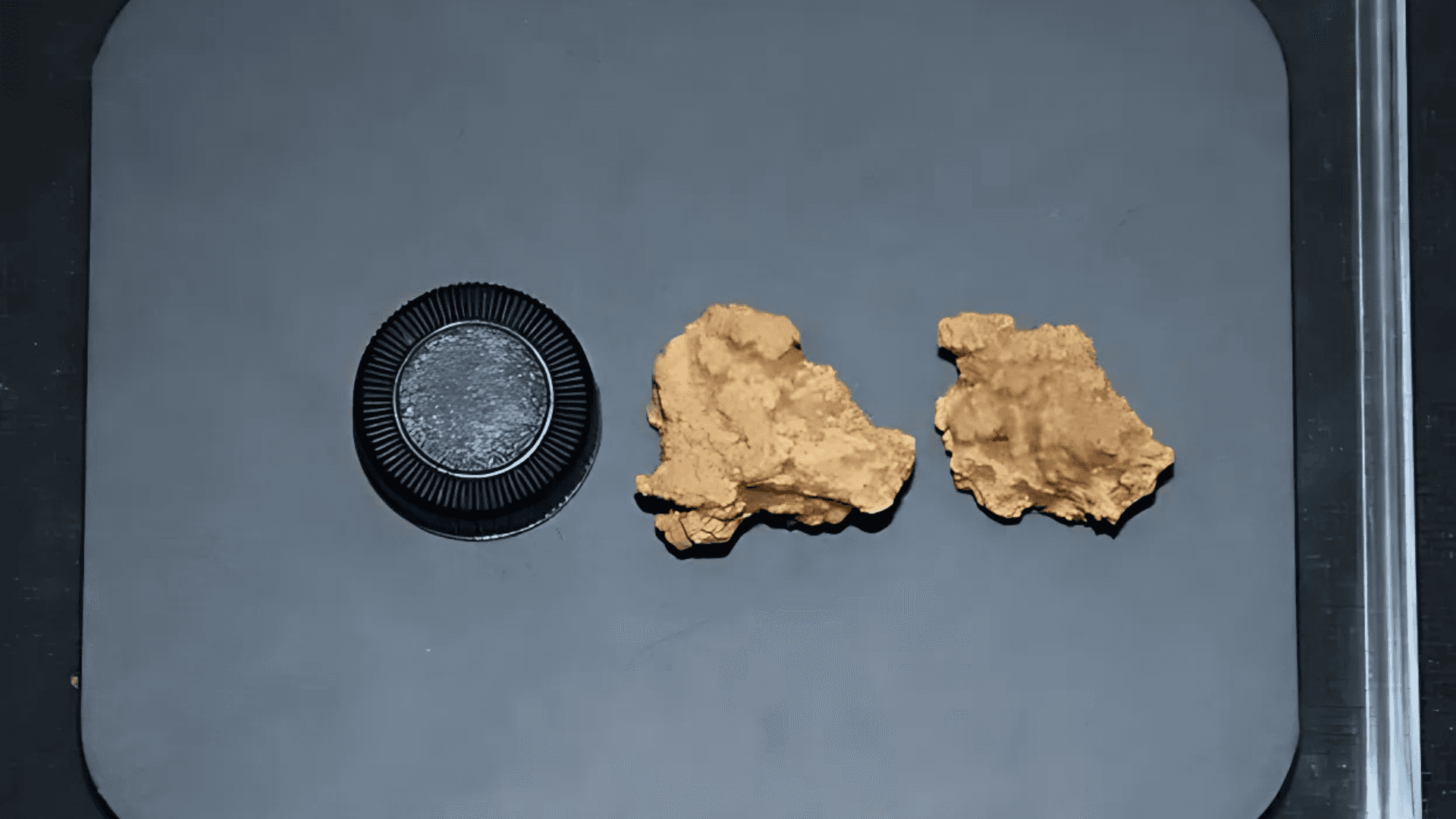Nine Mythical Places That May Have Existed, According to Archaeological Discoveries
Nine Mythical Places That May Have Existed, According to Archaeological Discoveries
Nine Mythical Places That May Have Existed, According to Archaeological Discoveries
Oct 3, 2024
Oct 3, 2024
Oct 3, 2024

Real ruins of Troy in Turkey. Credit: Getty Images via Canva.
Real ruins of Troy in Turkey. Credit: Getty Images via Canva.
Real ruins of Troy in Turkey. Credit: Getty Images via Canva.
Explore how nine legendary locations, from Troy to El Dorado, may have substantial historical foundations, as revealed by recent archaeological discoveries that blur the lines between myth and reality.
Explore how nine legendary locations, from Troy to El Dorado, may have substantial historical foundations, as revealed by recent archaeological discoveries that blur the lines between myth and reality.
Explore how nine legendary locations, from Troy to El Dorado, may have substantial historical foundations, as revealed by recent archaeological discoveries that blur the lines between myth and reality.
Throughout history, various mythological places have fascinated generations with their legends and mysteries. However, new archaeological evidence suggests that some of these locations may have been real, not just products of human imagination. The following are nine mythical places that may have historical significance based on recent discoveries.
Troy (Turkey)
Immortalized by Homer's work, Troy was considered a myth until excavations in the 19th century in present-day Turkey revealed ruins that correspond to descriptions of the famous Trojan War.
Medusa's Cave (Gibraltar)
The legend of the gorgon Medusa, whose gaze turned men to stone, may have origins in a cave in Gibraltar. Archaeologists believe that ancient rituals at the site could have inspired the myth.
King Arthur's Castle (England)
The search for Camelot, the legendary home of King Arthur, has intrigued historians for centuries. Recent discoveries at the ruins of Tintagel Castle in Cornwall suggest a possible connection to the British hero.
Vinland (Newfoundland, Canada)
According to Viking sagas, Vinland was a land rich in resources west of Europe. Archaeologists have found traces of Norse settlements at L'Anse aux Meadows in Newfoundland, confirming that the Vikings reached America long before Columbus.
El Dorado (Colombia)
The golden city of El Dorado is one of South America's most famous legends. Although it hasn't been found, recent studies in Colombia reveal ancient societies with vast gold riches, supporting the hypothesis that El Dorado was inspired by these civilizations.
Temple of Solomon (Syria)
While the Temple of Solomon is often associated with Jerusalem, excavations in Syria suggest that an ancient temple dedicated to a mighty king might have inspired the legendary biblical sanctuary.
Minotaur's Labyrinth (Greece)
The myth of the Minotaur, trapped in a labyrinth on the island of Crete, may be linked to the Palace of Knossos. The intricate corridors of this archaeological structure allude to the legendary labyrinth.
Steinkjer (Norway)
Steinkjer, the "stone city" of Norse mythology, has been associated with Viking tales. Recent research has uncovered stone constructions that may have been the foundation for these stories.
Pool of Siloam (Jerusalem)
Mentioned in the Bible, the Pool of Siloam was newly found by archaeologists in Jerusalem. It's believed that the site was used for purification rituals, confirming its historical and spiritual significance.
—
These discoveries reveal how the past and myth are more intertwined than we imagine, showing that many legends may have roots in places that existed. Excavations continue to turn myths into reality.
—
Explore the fascinating archaeological discoveries that unveil the reality behind mythical places in a detailed report from the Smithsonian. Access the full article here.
Throughout history, various mythological places have fascinated generations with their legends and mysteries. However, new archaeological evidence suggests that some of these locations may have been real, not just products of human imagination. The following are nine mythical places that may have historical significance based on recent discoveries.
Troy (Turkey)
Immortalized by Homer's work, Troy was considered a myth until excavations in the 19th century in present-day Turkey revealed ruins that correspond to descriptions of the famous Trojan War.
Medusa's Cave (Gibraltar)
The legend of the gorgon Medusa, whose gaze turned men to stone, may have origins in a cave in Gibraltar. Archaeologists believe that ancient rituals at the site could have inspired the myth.
King Arthur's Castle (England)
The search for Camelot, the legendary home of King Arthur, has intrigued historians for centuries. Recent discoveries at the ruins of Tintagel Castle in Cornwall suggest a possible connection to the British hero.
Vinland (Newfoundland, Canada)
According to Viking sagas, Vinland was a land rich in resources west of Europe. Archaeologists have found traces of Norse settlements at L'Anse aux Meadows in Newfoundland, confirming that the Vikings reached America long before Columbus.
El Dorado (Colombia)
The golden city of El Dorado is one of South America's most famous legends. Although it hasn't been found, recent studies in Colombia reveal ancient societies with vast gold riches, supporting the hypothesis that El Dorado was inspired by these civilizations.
Temple of Solomon (Syria)
While the Temple of Solomon is often associated with Jerusalem, excavations in Syria suggest that an ancient temple dedicated to a mighty king might have inspired the legendary biblical sanctuary.
Minotaur's Labyrinth (Greece)
The myth of the Minotaur, trapped in a labyrinth on the island of Crete, may be linked to the Palace of Knossos. The intricate corridors of this archaeological structure allude to the legendary labyrinth.
Steinkjer (Norway)
Steinkjer, the "stone city" of Norse mythology, has been associated with Viking tales. Recent research has uncovered stone constructions that may have been the foundation for these stories.
Pool of Siloam (Jerusalem)
Mentioned in the Bible, the Pool of Siloam was newly found by archaeologists in Jerusalem. It's believed that the site was used for purification rituals, confirming its historical and spiritual significance.
—
These discoveries reveal how the past and myth are more intertwined than we imagine, showing that many legends may have roots in places that existed. Excavations continue to turn myths into reality.
—
Explore the fascinating archaeological discoveries that unveil the reality behind mythical places in a detailed report from the Smithsonian. Access the full article here.
Throughout history, various mythological places have fascinated generations with their legends and mysteries. However, new archaeological evidence suggests that some of these locations may have been real, not just products of human imagination. The following are nine mythical places that may have historical significance based on recent discoveries.
Troy (Turkey)
Immortalized by Homer's work, Troy was considered a myth until excavations in the 19th century in present-day Turkey revealed ruins that correspond to descriptions of the famous Trojan War.
Medusa's Cave (Gibraltar)
The legend of the gorgon Medusa, whose gaze turned men to stone, may have origins in a cave in Gibraltar. Archaeologists believe that ancient rituals at the site could have inspired the myth.
King Arthur's Castle (England)
The search for Camelot, the legendary home of King Arthur, has intrigued historians for centuries. Recent discoveries at the ruins of Tintagel Castle in Cornwall suggest a possible connection to the British hero.
Vinland (Newfoundland, Canada)
According to Viking sagas, Vinland was a land rich in resources west of Europe. Archaeologists have found traces of Norse settlements at L'Anse aux Meadows in Newfoundland, confirming that the Vikings reached America long before Columbus.
El Dorado (Colombia)
The golden city of El Dorado is one of South America's most famous legends. Although it hasn't been found, recent studies in Colombia reveal ancient societies with vast gold riches, supporting the hypothesis that El Dorado was inspired by these civilizations.
Temple of Solomon (Syria)
While the Temple of Solomon is often associated with Jerusalem, excavations in Syria suggest that an ancient temple dedicated to a mighty king might have inspired the legendary biblical sanctuary.
Minotaur's Labyrinth (Greece)
The myth of the Minotaur, trapped in a labyrinth on the island of Crete, may be linked to the Palace of Knossos. The intricate corridors of this archaeological structure allude to the legendary labyrinth.
Steinkjer (Norway)
Steinkjer, the "stone city" of Norse mythology, has been associated with Viking tales. Recent research has uncovered stone constructions that may have been the foundation for these stories.
Pool of Siloam (Jerusalem)
Mentioned in the Bible, the Pool of Siloam was newly found by archaeologists in Jerusalem. It's believed that the site was used for purification rituals, confirming its historical and spiritual significance.
—
These discoveries reveal how the past and myth are more intertwined than we imagine, showing that many legends may have roots in places that existed. Excavations continue to turn myths into reality.
—
Explore the fascinating archaeological discoveries that unveil the reality behind mythical places in a detailed report from the Smithsonian. Access the full article here.
Compartir en:
Compartir en:
Ver También
Ver También

DeepSeek AI: el chatbot chino que está sacudiendo el mercado global
Feb 7, 2025

Estudio revela que la vida social activa puede reducir el riesgo de demencia
Feb 4, 2025

Año nuevo lunar 2025: la llegada del año de la serpiente
Jan 30, 2025

Nueva hipótesis sobre el origen de los dinosaurios desafía conceptos tradicionales
Jan 27, 2025

Colapso de la plataforma de hielo Conger: alerta para la Antártida Oriental
Dec 20, 2024

Emociones y el cuerpo humano: conexiones milenarias en textos neoasirios
Dec 20, 2024

Un estudio relaciona la contaminación atmosférica con el riesgo de tromboembolia venosa
Dec 20, 2024

Ambiente potencialmente habitable en Marte descubierto por Perseverance
Dec 20, 2024

Revolución XRISM: Nuevos descubrimientos sobre agujeros negros supermasivos
Oct 15, 2024

Estudio aponta que la duplicación del gen AMY1, relacionado con la digestión del almidón, precede a la agricultura
Oct 14, 2024

Nacimientos en la UE caen por debajo de los 4 millones por primera vez desde 1960
Oct 11, 2024

Excavación en Dinamarca revela 50 esqueletos Viking increíblemente preservados
Oct 10, 2024

Estudio detecta mayor incidencia de asma y rinitis alérgica en personas nacidas en otoño e invierno en Finlandia
Oct 9, 2024

Estudio señala similitudes entre la pubertad de adolescentes de la Edad de Hielo y jóvenes modernos
Oct 8, 2024

Análisis de ADN en momias chinas de 3.600 años revela el queso más antiguo del mundo
Oct 7, 2024

Estudio revela estabilidad genética de poblaciones del África Austral durante 10 milenios
Oct 4, 2024

Nueve lugares míticos que podrían haber existido, según descubrimientos arqueológicos
Oct 3, 2024

Cómo los derechos humanos pueden salvar los arrecifes de coral y responsabilizar a los gobiernos
Oct 2, 2024

Informe de Carbon Brief señala que 2024 podría ser el año más cálido de la historia
Sep 4, 2024

El clima determina la distribución de mamíferos, revela estudio de la Universidad Estatal de Carolina del Norte
Sep 4, 2024

DeepSeek AI: el chatbot chino que está sacudiendo el mercado global
Feb 7, 2025

Estudio revela que la vida social activa puede reducir el riesgo de demencia
Feb 4, 2025

Año nuevo lunar 2025: la llegada del año de la serpiente
Jan 30, 2025

Nueva hipótesis sobre el origen de los dinosaurios desafía conceptos tradicionales
Jan 27, 2025

Colapso de la plataforma de hielo Conger: alerta para la Antártida Oriental
Dec 20, 2024

Emociones y el cuerpo humano: conexiones milenarias en textos neoasirios
Dec 20, 2024

Un estudio relaciona la contaminación atmosférica con el riesgo de tromboembolia venosa
Dec 20, 2024

Ambiente potencialmente habitable en Marte descubierto por Perseverance
Dec 20, 2024

Revolución XRISM: Nuevos descubrimientos sobre agujeros negros supermasivos
Oct 15, 2024

Estudio aponta que la duplicación del gen AMY1, relacionado con la digestión del almidón, precede a la agricultura
Oct 14, 2024

Nacimientos en la UE caen por debajo de los 4 millones por primera vez desde 1960
Oct 11, 2024

Excavación en Dinamarca revela 50 esqueletos Viking increíblemente preservados
Oct 10, 2024

Estudio detecta mayor incidencia de asma y rinitis alérgica en personas nacidas en otoño e invierno en Finlandia
Oct 9, 2024

Estudio señala similitudes entre la pubertad de adolescentes de la Edad de Hielo y jóvenes modernos
Oct 8, 2024

Análisis de ADN en momias chinas de 3.600 años revela el queso más antiguo del mundo
Oct 7, 2024

Estudio revela estabilidad genética de poblaciones del África Austral durante 10 milenios
Oct 4, 2024

Nueve lugares míticos que podrían haber existido, según descubrimientos arqueológicos
Oct 3, 2024

Cómo los derechos humanos pueden salvar los arrecifes de coral y responsabilizar a los gobiernos
Oct 2, 2024

Informe de Carbon Brief señala que 2024 podría ser el año más cálido de la historia
Sep 4, 2024

El clima determina la distribución de mamíferos, revela estudio de la Universidad Estatal de Carolina del Norte
Sep 4, 2024